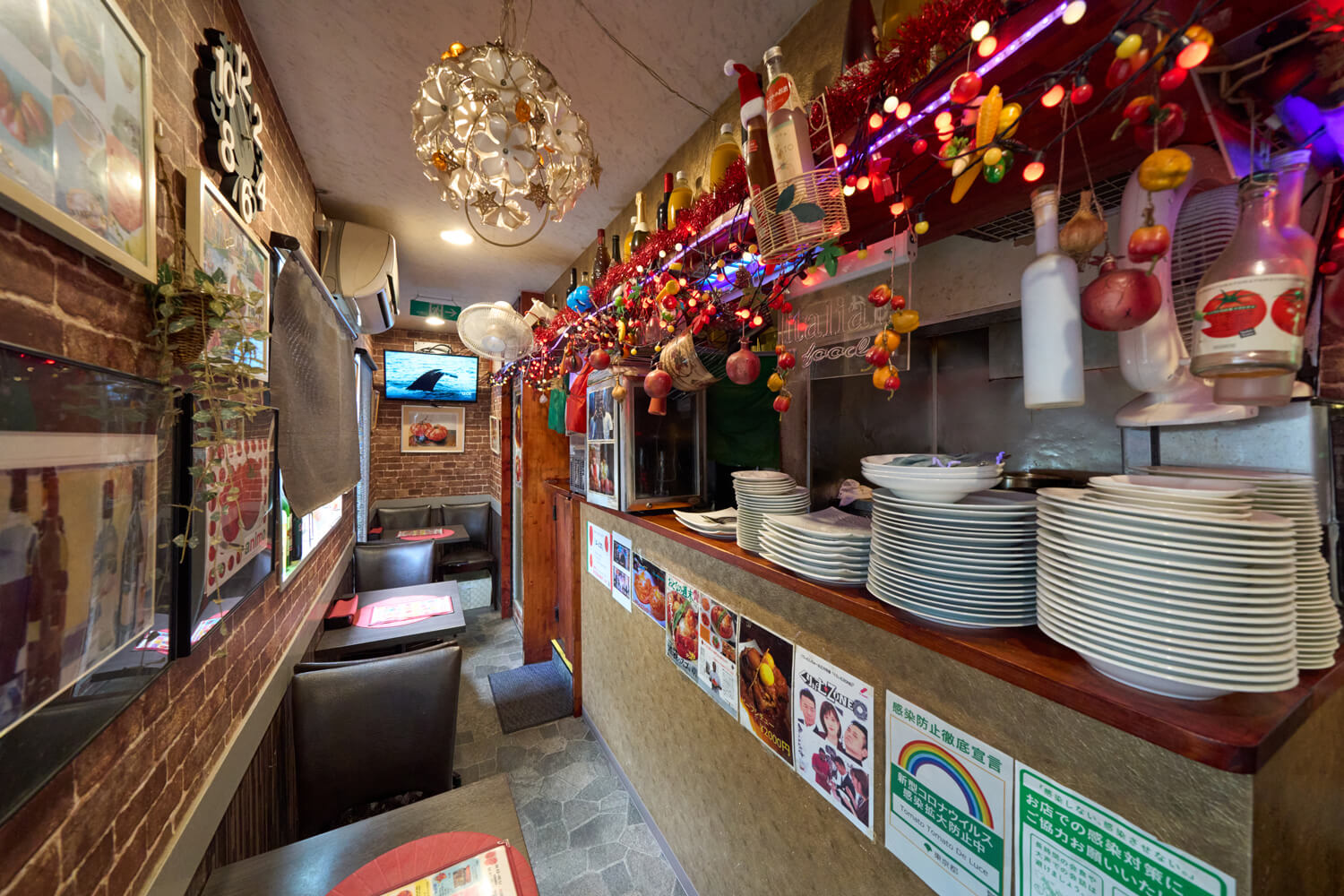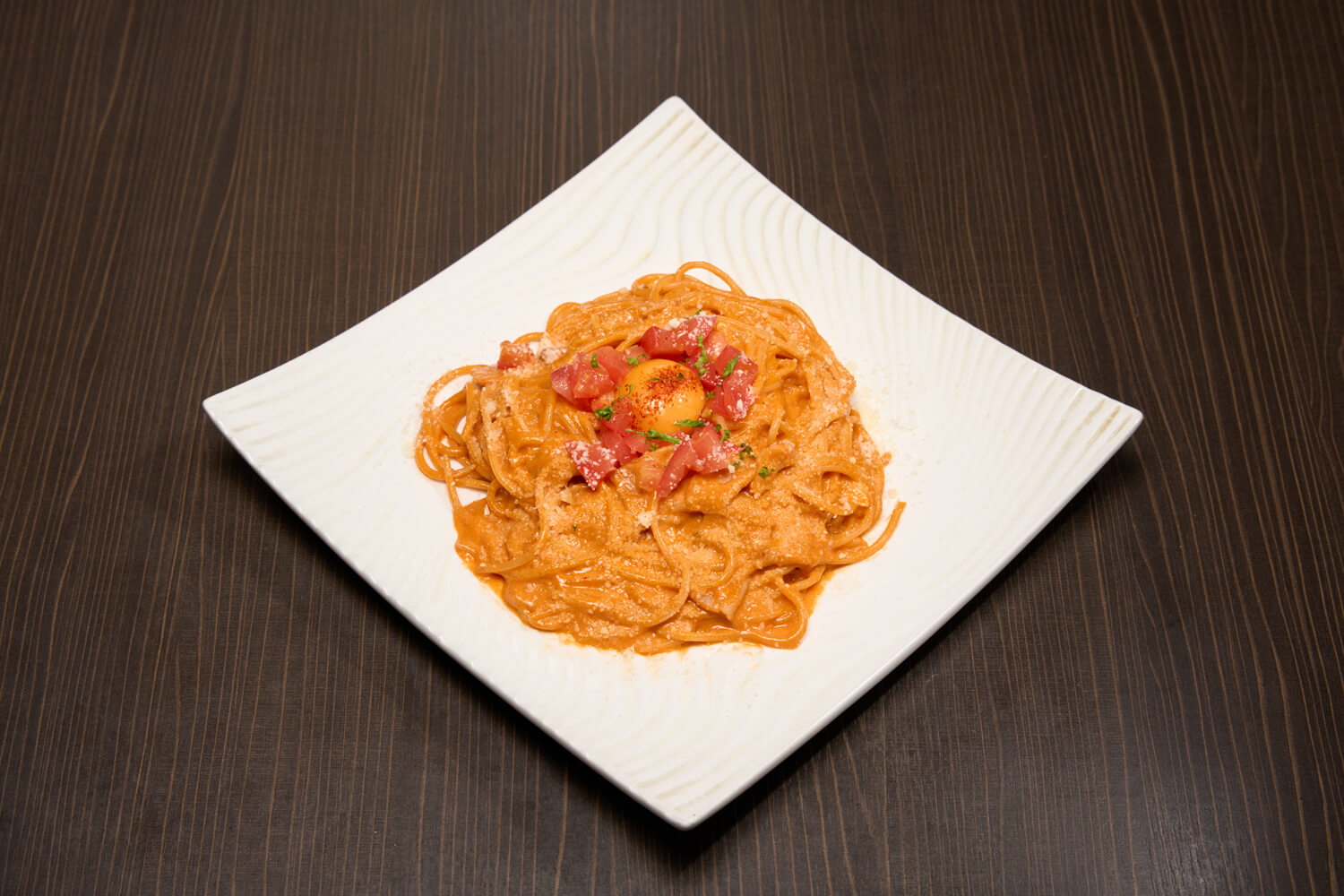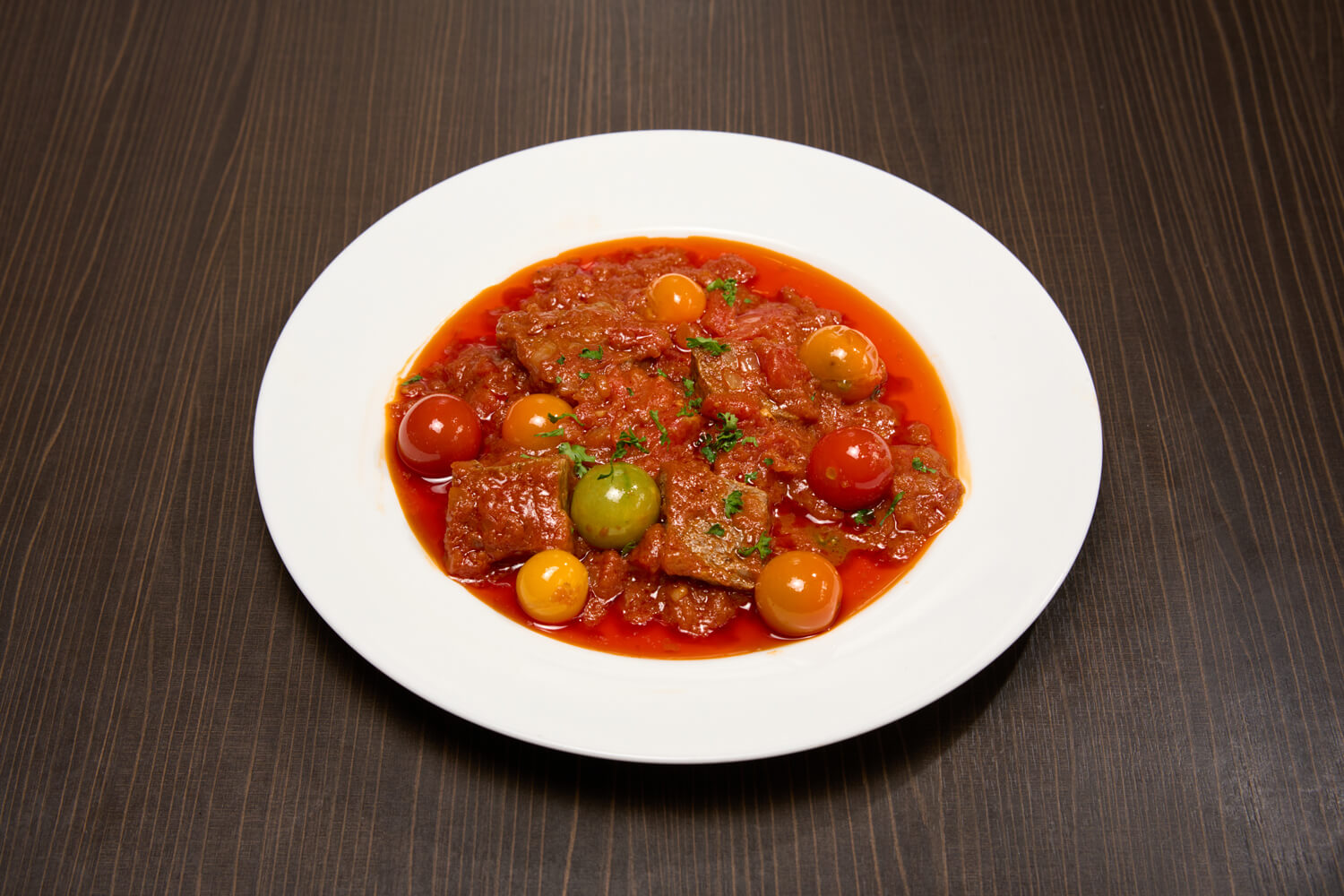Nigerian Chef Celebrates Japan’s Exquisite Tomatoes
TOMATO×TOMATO DE LUCE is serving creative flavors with unique tomato-based dishes using Japan’s exquisite ingredients in Ikebukuro, Tokyo.

© Kiyofumi Kuratani
Originally from Nigeria, Amobi Attanetius, owner and chef of TOMATO×TOMATO DE LUCE, has been in the restaurant business for over 25 years.
‘Italian cuisine isn’t commonly found in Nigeria. However, upon my arrival in Japan, I had the opportunity to sample various pasta dishes, and I was captivated both by their exquisite flavor and by the simplicity of their preparation.’
Firstly, he worked as a chef in Italian restaurants in Tokyo, and continued to do so for 13 years. During this time, he also spent three months in Rome, Italy, honing his culinary skills.
Through these experiences, in 2012, he launched TOMATO×TOMATO DE LUCE.
Everywhere you look in Attanetius’s restaurant, there is one constant, very distinct theme—tomatoes. Decorative tomatoes hang above the bar, and tomatoes are in every dish on the menu.
Attanetius’s tomatoes are from all over Japan. He favors Japanese varieties because they have a softer skin compared to those from abroad and are very juicy, making them excellent to cook sauces with. He also explains that due to Japan’s four distinct seasons, he meticulously selects the exquisite produce, ensuring optimal condition and freshness, from various regions across the country, in accordance with each season.
The restaurant has many repeat customers, but Attanetius’s creamy “TOMATO DE LUCE CARBONARA” in particular is so well loved that the repeat order rate exceeds 90%. Despite their richness, the added tomatoes impart a delightful hint of acidity that lends a refreshing quality to the dish. The interplay of flavors from the black pepper along with the bacon, contributes to an overall exquisite culinary experience.
More information can be found on TOMATO×TOMATO DE LUCE’s official website.

© Kiyofumi Kuratani

© Kiyofumi Kuratani

© Kiyofumi Kuratani
TRENDING
-
The Tattoos that Marked the Criminals of the Edo Period
Traditional tattoos were strong signifiers; murderers had head tattoos, while theft might result in an arm tattoo.

-
Chiharu Shiota, Red Threads of the Soul
Last year, more than 660,000 people visited the retrospective 'Chiharu Shiota: The Soul Trembles' exhibit at the Mori Art Museum.

-
‘Before Doubting Others, Doubt Yourself. Who Can Truly Say a Dish Isn’t What It Used to Be?’
In ‘A Non-Conformist’s Guide to Surviving Society’, author Satoshi Ogawa shares his strategies for navigating everyday life.

-
The Story of Sada Yacco, the Geisha who Bewitched Europe
Described by Dazed magazine as the first beauty influencer, she has been restored to her former glory since 2019.

-
Ito Jakuchu's Naturalist Paintings
From 15 September until 14 October 2018, the Petit Palais showcased the artist's iconic ‘Images of the Colourful Realm of Living Beings’.





